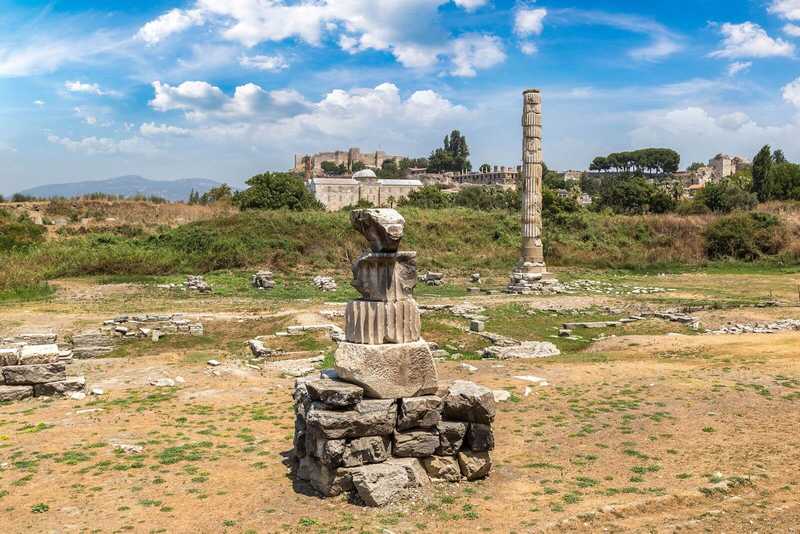The sixth century BC market a golden age for Ionia. It was an age where many architectural buildings were constructed that captured the world’s attention.
Among them was the Temple of Artemis at Ephesus, which ranked as one of the Seven Wonders of the Ancient World. Today, the temple ruins lie on the Kuşadası road 1.5 kilometers to the east of Ephesus at the western periphery of the town of Selçuk.
The temple was discovered in 1869 by the British engineer and archeologist, John Turtle Wood, after seven years of excavation.After 1869 work continued in 1904-1905 with David George Hogarth directing excavations on behalf of the British Museum. Then followed a long hiatus until 1965 where excavations where eventually resumed by the Austrian Institute of Archaelogy; they remain ongoing today.
The oldest finds encountered at the site of the temple are fragments of Mycenaen pottery dating from the fourteenth-thirteenth century BC. The temple area appears to have been used as a cult sanctuary as early as eleventh sanctuary BC and been home to successive temples built one on top of the other until Late Antiquity. Evidence gleaned from excavations suggests that the first built between 680-650 BC, measıred 13.5 x 8.5 metres and featured 4 x 8 columns. This construction of a colossal temple composed of marble columns followed a century later, in 570 BC. This structure which probably measured 100 x 60 meters, was characterized by 106 marble columns decorated with reliefs. Some sections of the columns and marble friezes found during early excavations were taken to the British. Having been financed by the Lydian King, Croesus, this incarnation of the temple is referred to as the ‘Temple of Croesus’. The architects responsible were Thedorus and the father-and-son team, Chersiphron and Metagenes, who must surely have been influenced by Hittite, Asyrian, Egyptian and Urartu art in building such a spectaculary large temple.Among early sources, Pliny wrote in his encylopedia ‘Natural Historia’ that the temple measured 220 x 425 feet and was fronted by thirty-six columns carved with reliefs.
Come 356 BC, however, an act of arson by the madman, Herostratos, destroyed the temple, causing the roof to cave in. Soon afterwards, work began on rebuilding the temple over the foundations of its predecessor, now in a hollow due to alluvial deposits carried by the Küçük Menderes (Cayster) River. The new temple, probably of the same dimensions, was constructed to a hight of 18.4 metres with one hundred and twenty-seven columns. Because of the rising sea level, the structure was raised by 2.7 metres and mounted on a thirteen-step crepidoma. The architects this time included Palonius, Demetrius and Cheiroctates.
Construction was still ongoing when Alexander the Great appeared on the scene; but his offers of financial support - in return for dedicatory inscription - were rebuffed by the Ephesians on the grounds that it was ‘inappropriate for one god to dedicate a temple to another’. Built entirely of marble, the temple presented an impressive spectacle given its size, grandeur and myriad statues.
In 262 AD, the edifice was razed by invading Goths, although part of it was later restored and remained in use until 400 AD. In Late Antiquity, once the worship of Artemis was history.

